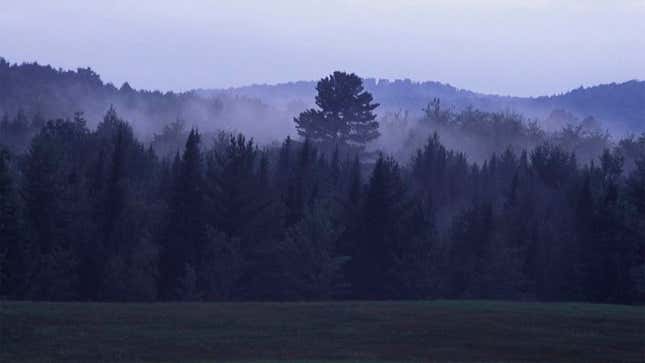
BETHESDA, MD—Confirming accounts handed down among townsfolk for generations untold, a report released Wednesday by the National Institutes of Health has revealed the top cause of death in the United States is still venturing beyond the pines.
The report, which analyzed the nation’s mortality data from the past decade, found that wandering past the tree line and entering the shadowy depths that lie therein results in approximately 650,000 deaths each year. Researchers noted that the risk of meeting a mysterious and deadly fate beyond the pines remained high across all demographics, from the purest-hearted children to the most revered town elders.
“Our findings indicate that forces unknown lurking among the black pines account for one in every four American deaths,” said report co-author Shannon Reid, noting that the survival rate for individuals who set foot upon the forest floor and allow the darkness below the boughs to envelop them has held steady at just 2 percent. “Merely straying close to the pines is dangerous, but once you pass beneath the thick, misty canopy through which no beacon of light can penetrate, your risk of death increases dramatically.”
She added, “Such fatalities continue to occur regularly, in part because we have seen no decrease in the number of people hearing otherworldly voices that beckon them into the woods with whispers of ‘This way; follow me.’”
According to the report, 43 percent of pines-related fatalities are the result of people losing their way on a foggy night, 39 percent can be traced to individuals attempting to find a shortcut despite warnings from all those they pass, and 18 percent occur when people suddenly awaken in the dead of night, walk straight out the door in their bedclothes, and pace blindly through the moonlight in the direction of the trees.
Researchers warned that since 2010, there has been a startling increase in beyond-the-pines deaths of children under the age of 6, particularly among those who have gone out looking for flowers to make a daisy chain.
Most fatalities reportedly occur just before dawn, at which time the deceased’s clothing is often discovered neatly laid out at the edge of the woods, or a small wooden doll depicting their likeness suddenly appears in their bed. The NIH study confirmed that a very small fraction of those who wander into the pines return alive, but experts said these individuals typically remain mute for the rest of their lives, and are forever marked by spells of wide-eyed paralysis and a shock of prematurely white hair.
“There does appear to be a hereditary risk—people with close relatives who have gone where the tall pines grow are more likely to disappear into the trees themselves,” Reid said. “So it is important to know your family history and disregard any dreams you have in which a departed loved one calls out for you to join them in the forest. Doing so is not safe under any circumstance.”
Reid told reporters the NIH has undertaken several new initiatives in an attempt to curb the number of deaths in the pines, such as stationing old, cloaked figures at forks in the road to warn travelers about the strange malevolence that dwells in the heart of the woods, and launching an educational campaign to dispel the common misconception that treading into the forbidden grove was perfectly safe under a harvest moon when the light is near bright as day.
She also recommended that Americans clip a lock of hair from a young child, tie it with a silk ribbon, and leave it several paces from the edge of the forest to help ward off the deathly menace.
“It’s the kind of thing you never think can happen to your family until one day it does,” said Brenna Ayers, whose daughter chased her paper kite into the pines last year and never returned. “I miss Maddy every day, and the haunting sound of her voice softly reciting nursery rhymes that I hear whenever the wind blows through the trees is no replacement.”
Reid added that those looking for more information could visit www.NIH.gov or ask the old woman who lives among the hills.